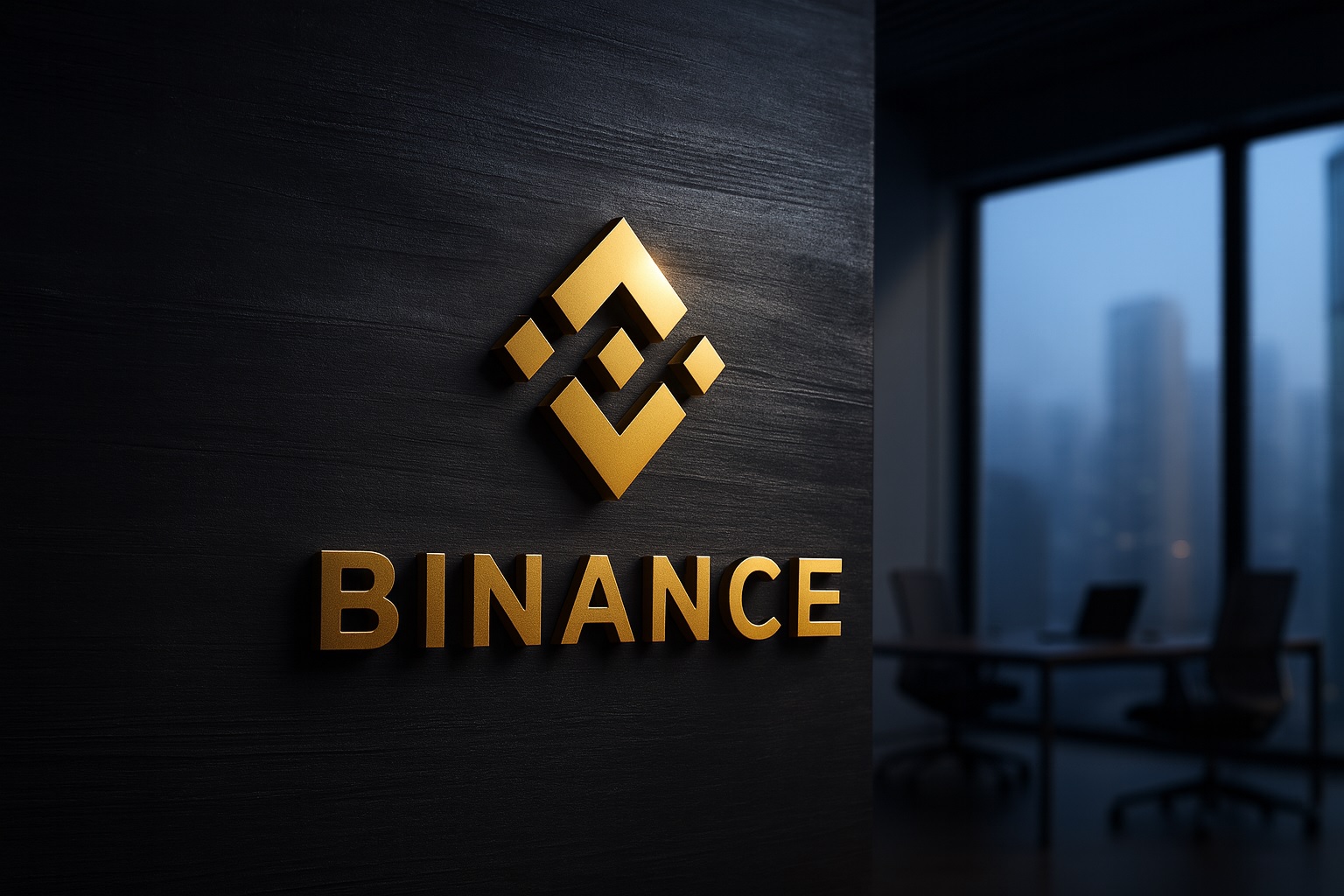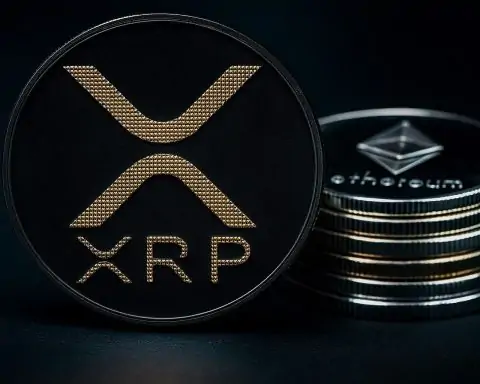Saturday’s Binance headlines are dominated by three big themes: a bruised but stabilising crypto market, new early‑stage token launches on Binance Alpha, and fresh fiat on‑ramp integrations in Asia.
Across Binance’s ecosystem, BNB is trading in the mid‑$800s after a sharp overnight drop, Bitcoin is hovering around $84,000, and the exchange is leaning into airdrops and listings to keep traders engaged in what data providers describe as an “extreme fear” phase for crypto. [1]
Below is a full rundown of the most important Binance‑related news for November 22, 2025, plus the wider context shaping sentiment around the world’s largest crypto exchange.
1. Market snapshot: BNB under pressure as BTC stabilises near $84,000
Binance’s official market update for November 22 puts the global crypto market cap at about $2.87 trillion, up 1.35% over the last 24 hours. Bitcoin has traded between roughly $80,600 and $85,620 in that window and sat near $84,100 (+1.18%) as of 09:30 UTC. [2]
Key large‑caps on Binance at that time included: [3]
- ETH: $2,725.1 (+0.51%)
- BNB: $816.02 (‑1.04%)
- XRP: $1.91 (‑0.81%)
- SOL: $126.17 (‑1.12%)
- TRX: $0.2748 (‑0.97%)
Binance’s news desk also published a separate note at 05:41 UTC flagging that BNB briefly fell below $820, with a 24‑hour loss of about 4.9% at that time before partially recovering later in the morning. [4]
Off‑platform data reinforces the idea that BNB has been in a short‑term downtrend: a 7‑day price history from Paybis shows BNB sliding from around $931 on November 19 to the mid‑$830s by November 22, a drop of roughly 10% over the week. [5]
At the same time, Binance’s own Bitcoin market feed notes that BTC has re‑taken the $84,000 level after violent moves earlier in the week, with intraday market data showing it crossing the 84K mark with a modest daily gain. [6]
In short: prices are down from October’s highs, but today’s tape looks more like consolidation than free‑fall, with BNB lagging BTC and ETH.
2. Binance Alpha: DIGI listing goes live as airdrop season ramps up
While spot prices wobble, Binance Alpha, the early‑stage token platform integrated into Binance Wallet, is doubling down on new listings and airdrop incentives.
DIGI officially added at 10:00 UTC
Crypto news outlet BitcoinWorld reports that MineD (DIGI) was formally added to Binance Alpha at 10:00 a.m. UTC today, framing it as a fresh opportunity for traders chasing early‑stage projects. The article stresses that Alpha operates as an on‑chain trading service focused on new coins and argues that the DIGI listing signals Binance’s confidence in the project’s potential. [7]
Binance Alpha’s positioning, according to that coverage:
- It focuses on pre‑mainstream, early‑stage assets.
- Listings go through due‑diligence checks on tech, team and viability.
- DIGI trading and custody happen within Binance Wallet, streamlining access for existing users. [8]
An article from AInvest adds more colour: it describes DIGI as a token tied to GPU and compute infrastructure, aimed at tokenising real‑world mining and AI resources, and notes that rewards are gated by Alpha Points thresholds, mirroring previous Alpha campaigns. [9]
Double airdrops: DIGI and Kyuzo’s Friends (KO)
A deeper look at a CoinMarketCap Academy feature on “Binance Alpha News: Extreme Fear Grips Market as New Listings Queue Up” shows that DIGI is only part of an aggressive launch calendar. Binance Alpha has announced five token listings this week, including a “double drop” of DIGI and Kyuzo’s Friends (KO) scheduled for November 22–23 with airdrops tied to Alpha Points. [10]
Key details from that report:
- Binance Alpha market cap: about $12.8 billion, with $10.67 billion in 24‑hour trading volume. [11]
- New listings this week: DGRAM, PLAYSOLANA, GAIB, ARTX and the DIGI/KO double drop, each paired with a dedicated airdrop campaign. [12]
- Past airdrops have required roughly 140–245 Alpha Points and consume an additional 15 points when users claim allocations, under a 24‑hour claim window. [13]
The same article notes that the Crypto Fear & Greed Index has collapsed to 11/100, its lowest level since March 2025, even as Alpha’s listing pace stays high. [14]
Taken together, Binance is clearly using Alpha and airdrops to keep volumes and engagement up in a market where large‑cap prices are under heavy pressure.
3. Collateral, leverage and flows: Bitcoin and ETH moves tied to Binance
Beyond prices and listings, several stories today highlight how Binance remains central to crypto balance‑sheet management and whale behaviour.
1,003 BTC pledged as collateral at all‑time‑high issuance price
A new Binance News item titled “Bitcoin Collateral Increased Amid Market Pressure” focuses on a transfer of 1,003 BTC to custody provider Cobo. According to the article, analyst Emmett Gallic (citing Arkham data) says this BTC was posted as collateral for an earlier $250 million convertible‑bond financing by firm Nakamoto (formerly Kindly MD). It’s the second BTC collateral top‑up this week, and the issuance price for the deal was set at Bitcoin’s all‑time high of $124,000, underscoring how far spot prices have since fallen. [15]
Binance’s write‑up frames the move as a reminder that leverage and margin pressure are building as markets slide, and that investors should be mindful of liquidation risks when collateral values drop. [16]
Exchange inflows surge as Binance “takes charge of Q4”
Separately, a long‑form blog from Web3 bank OneSafe argues that Bitcoin exchange inflows have surged in recent weeks, with Binance emerging as the leading venue in Q4. The piece cites: [17]
- An estimated 163,800 BTC in fresh inflows to Binance.
- Roughly $9 billion growth in stablecoin reserves on the platform over a single month, interpreted as “dry powder” waiting to be deployed.
- Bitcoin trading near $93,000 at the time of writing, down about 26% from its peak, but still attracting both institutional ETF inflows and active traders.
The authors suggest that short‑term sellers are capitulating while more committed holders accumulate, with Binance acting as a main hub for this rotation. [18]
Ethereum whale quietly drains BNB’s order books
On the Ethereum side, CryptoRank relays a BitcoinWorld story about an “Ethereum Whale” withdrawing roughly $65 million worth of ETH from Binance, bringing that address’s cumulative holdings to around 490,000 ETH. [19]
The move is framed as continued accumulation off‑exchange rather than a rush to sell, and it comes at a moment when ETH is trading below $3,000 and has significantly underperformed Bitcoin over recent months. [20]
For traders watching on‑chain flows, the signal is simple: large holders are still using Binance as their primary liquidity venue, but many are choosing to hold assets off‑exchange once fills are complete.
4. Binance Japan integrates PayPay Money for instant retail crypto purchases
In Asia, Binance Japan has just taken a notable step to make crypto more accessible to retail users.
CryptoRank summarises a joint launch with PayPay Corporation, under which Binance Japan users can now: [21]
- Buy crypto directly using PayPay Money from within Binance Japan’s spot platform.
- Withdraw proceeds back into their PayPay balance after selling crypto.
- Start with a minimum purchase of just JPY 1,000, with 24/7 access outside scheduled maintenance windows.
- Combine PayPay Points and PayPay Money for funding, provided they toggle “Use for payments” in the PayPay app.
The integration effectively turns PayPay’s digital wallet into a near‑instant fiat on‑ramp and off‑ramp for Binance Japan, a big move in a country where cash‑heavy consumer habits and strict regulation have slowed direct crypto adoption.
Given Japan’s status as both a mature financial market and a heavily regulated jurisdiction, this partnership is likely to be closely watched by regulators and competitors across the region.
5. Education and outreach: Binance Thailand leans into “Money Freedom”
In Thailand, Binance’s local operation is pushing more softly‑framed messaging.
A feature on Money & Banking notes that Binance TH is promoting a “Money Freedom” campaign, encouraging users to view financial freedom in the digital age as a combination of: [22]
- Setting clear personal financial goals,
- Building skills to increase income, and
- Using digital tools, including crypto, as part of a broader wealth‑building plan rather than a get‑rich‑quick scheme.
While the full article isn’t easily accessible without local support, the teaser signals Binance’s ongoing effort to position itself as an educator and partner in financial literacy, not just a high‑risk trading venue, in Southeast Asia.
6. Leadership and reputation: Teng’s “healthy consolidation” message vs. fresh scrutiny
Richard Teng defends Bitcoin’s volatility
Yesterday, Binance CEO Richard Teng spoke at a media roundtable in Sydney, downplaying the idea that November’s Bitcoin crash is unique to crypto. He argued that: [23]
- Bitcoin’s roughly 21% drop this month and 23% slide over three months are part of a broader “risk‑off” and deleveraging trend across asset classes.
- BTC is still trading at more than double its 2024 levels, when major institutions like BlackRock launched their first wave of crypto products.
- The current drawdown should be seen as a “healthy consolidation” after an 18‑month run‑up.
Teng also reiterated that while founder Changpeng “CZ” Zhao remains a controlling shareholder, Binance’s day‑to‑day operations are overseen by a seven‑member board with three independent directors and an independent chair, and there has been no decision yet on whether CZ will return to an operational role after his presidential pardon. [24]
CZ’s $4.3B “refund” comments stir debate
Earlier this week, several outlets including Coingape and Yellow reported on posts from CZ in which he said that if any portion of Binance’s $4.3 billion U.S. Department of Justice settlement were ever refunded, he would reinvest it in the United States “to show appreciation” following his pardon by President Trump. CZ stressed that he has not requested a refund, calling the topic “delicate.” [25]
The comment has fuelled a fresh wave of discussion about:
- The politics of Trump’s pardon,
- Whether a presidential pardon should impact corporate fines, and
- How much influence CZ still exerts over Binance’s strategic direction.
ICIJ investigation alleges continued exposure to illicit flows
At the same time, Binance continues to face reputational pressure. A high‑profile investigation from the International Consortium of Investigative Journalists (ICIJ) alleges that, even after Binance’s 2023 guilty plea for anti‑money‑laundering failures, the exchange continued processing hundreds of millions of dollars in transactions tied to high‑risk counterparties, including at least $408 million in tether from Cambodia‑based Huione Group, which the U.S. Treasury later labeled a “primary money laundering concern.” [26]
ICIJ’s analysis, based on blockchain forensics, claims these flows occurred while Binance was under the watch of court‑appointed compliance monitors. [27]
Binance, in its response to the investigation, maintains that it: [28]
- Works “closely with global law enforcement,”
- Uses internal systems to identify and investigate suspicious activity, and
- Cannot technically block all inbound deposits on public blockchains.
Although this story dates from November 17, it continues to colour how today’s market moves and product launches are perceived, especially by regulators, banks and institutional investors deciding how far they want to deepen ties with Binance.
7. What today’s Binance news means for traders and investors
Putting all of today’s headlines together, a few themes stand out:
- Volatility is high but orderly.
- Binance is leaning into Alpha and airdrops as growth levers.
- The DIGI listing, KO airdrop and a pipeline of early‑stage tokens highlight a strategic bet that community‑driven incentives can keep users engaged even in “extreme fear” conditions. [31]
- Major balance‑sheet moves centre on Binance.
- From 1,003 BTC pledged as collateral for a $250m bond to tens of thousands of BTC in fresh exchange inflows and a whale quietly pulling tens of millions of dollars in ETH off the platform, today’s flow stories underline Binance’s ongoing role as crypto’s primary liquidity hub. [32]
- Regional fiat on‑ramps keep expanding.
- The PayPay Money integration in Japan gives Binance a powerful local bridge into everyday digital wallets, a model that could easily spread to other markets if regulators allow it. [33]
- Regulatory and reputational questions are not going away.
- Teng is pressing a message of “normal” volatility and improved governance, while investigative reporters and policy critics continue to question whether Binance’s compliance culture really changed after its 2023 plea deal. [34]
For traders and investors, the takeaway is that Binance remains both a core piece of crypto infrastructure and a flashpoint for regulatory scrutiny. Anyone using the exchange today needs to think not just about prices and airdrops, but also about counterparty, legal and leverage risk.
As always, this article is for informational purposes only and does not constitute financial or investment advice. Crypto markets are volatile and speculative; never risk money you cannot afford to lose, and consider seeking professional guidance before making major decisions.
References
1. www.binance.com, 2. www.binance.com, 3. www.binance.com, 4. www.binance.com, 5. paybis.com, 6. www.binance.com, 7. bitcoinworld.co.in, 8. bitcoinworld.co.in, 9. www.ainvest.com, 10. coinmarketcap.com, 11. coinmarketcap.com, 12. coinmarketcap.com, 13. coinmarketcap.com, 14. coinmarketcap.com, 15. www.binance.com, 16. www.binance.com, 17. www.onesafe.io, 18. www.onesafe.io, 19. cryptorank.io, 20. coincentral.com, 21. cryptorank.io, 22. moneyandbanking.co.th, 23. www.reuters.com, 24. www.reuters.com, 25. coingape.com, 26. www.icij.org, 27. www.icij.org, 28. www.icij.org, 29. www.binance.com, 30. www.binance.com, 31. coinmarketcap.com, 32. www.binance.com, 33. cryptorank.io, 34. www.reuters.com










